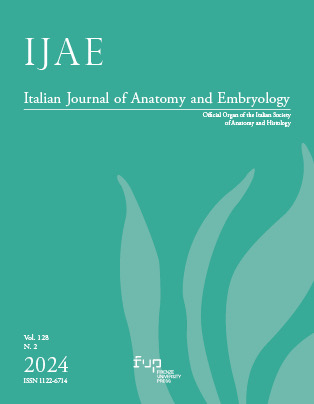A forgotten debate in the history of medicine: vascular anastomoses, from open functional relationships to tight structural connections
Published 2024-12-31
Keywords
- modern anastomosis,
- anatomy,
- physiology,
- history
How to Cite
Copyright (c) 2024 Paola Saccheri, Enrico Crivellato, Luciana Travan

This work is licensed under a Creative Commons Attribution 4.0 International License.
Abstract
According to current anatomical nomenclature, vascular anastomoses are direct connections between blood vessels. The Greek word ‘anastomōsis’ means ‘opening’ and conveys the idea of ‘patency’ rather than ‘connection’. Anastomōsis, and the related term sunanastomōsis, originally referred to a mere approximation of the mouths of adjacent blood vessels – especially arterioles and venules – facing each other at their terminal ends. These vessels were not strictly connected and did not form anatomical units in the proper sense. Over time, however, the term anastomōsis underwent a significant semantic change and now denotes a closed, structured anatomical connection. How and when did this semantic shift occur? The aim of the present study was to evaluate the concept of anastomōsis in different historical periods from Antiquity to the Seventeenth century and to investigate how this entity gradually lost its original meaning of mere functional opening to acquire the notion of true anatomical structure.


